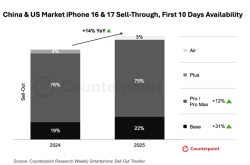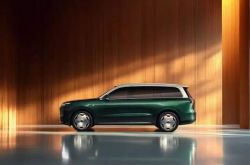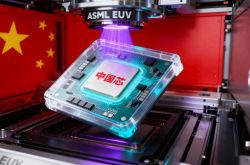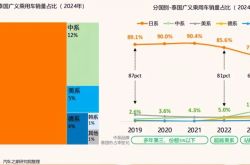Unitree Technology is a hit, but UBTECH doesn't want to 'learn from' Wang Xingxing?
![]() 04/11 2025
04/11 2025
![]() 528
528
The Spring Festival Gala ignited interest in Unitree's H1 humanoid robot dancing a cyber yangko dance, as well as Wang Xingxing and the entire humanoid robot investment market.
However, it's interesting to note that robotic dance performances on the Spring Festival Gala are not uncommon.
For example, the current 'first stock of humanoid robots,' UBTECH, has appeared on the Gala four times. In 2019, at the Shenzhen venue of the Spring Festival Gala, six UBTECH humanoid robots Walker performed the song and dance 'Youth Imagination' alongside celebrity actors. In 2021, UBTECH's 'Pioneer Ox' quadruped robot also left a deep impression on countless viewers.
Unfortunately, despite appearing on the Gala four times, UBTECH's robots have never created the same nationwide sensation as Unitree Technology this year.
This undoubtedly makes UBTECH, which missed the Spring Festival Gala for the first time this year, feel a bit uncomfortable.
Why is that? It may be related to being born at the wrong time, or it may be related to UBTECH's strategic transformation.
At a previous performance briefing, Zhou Jian said, 'This industry is indeed a bit strange right now. There are a lot of dancing and tumbling robots that may attract attention and may be favorable for financing, but to be honest, this technological route is not the one that humanoid robots should take. Humans can't somersault to get water and hand it to others.'
'There's a saying in our circle that if you reduce the degrees of freedom, height, and sensors at the hardware level, just for the sake of blindly punching or jumping, it's a bit like 'bullying'... I don't think this can replace the industry.'
Although many investors view Zhou Jian's remarks as subtly pointing at Unitree Technology and expressing envy, in fact, if we look at the 2024 financial report, it may also be the most realistic warning from Zhou Jian and UBTECH about the entire humanoid robot industry after being 'educated' by reality and commercialization.
Digging into the 'first stock of humanoid robots,' the mainstay turns out to be small household appliances?
According to Tianyancha APP, UBTECH generated revenue of RMB 1.305 billion in the past year, a year-on-year increase of 23.7%; gross profit increased from RMB 333 million in 2023 to RMB 374 million, a year-on-year increase of 12.4%, but the corresponding gross profit margin decreased from 31.5% to 28.7%.
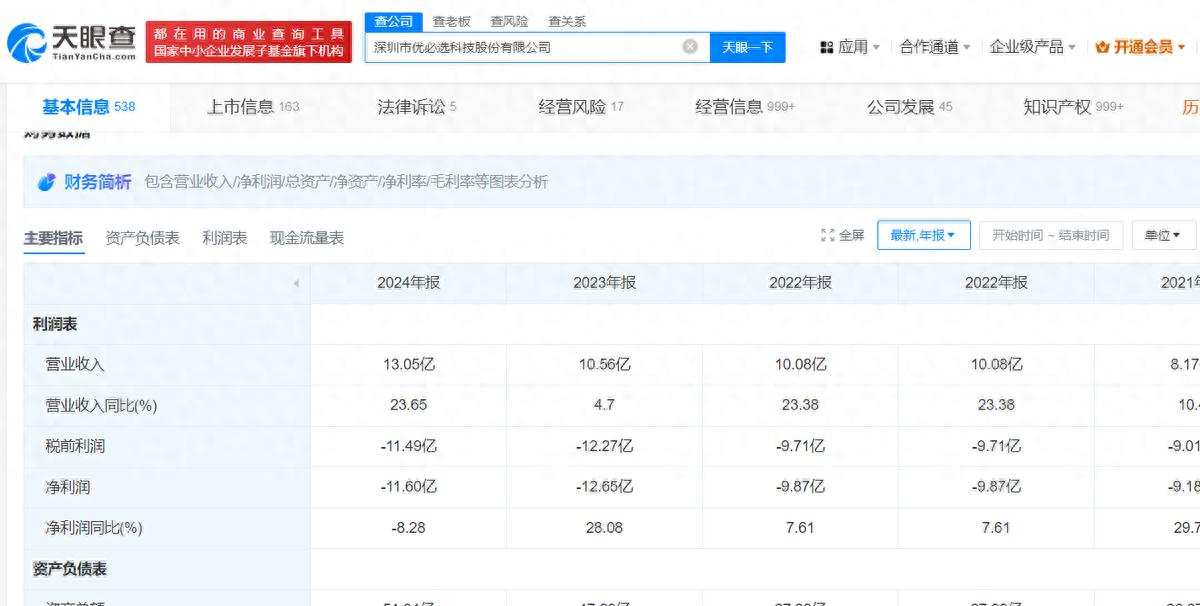
Net profit attributable to shareholders was -RMB 1.124 billion, a narrower year-on-year loss compared to -RMB 1.234 billion in 2023.
Overall, UBTECH has not yet reversed its continuous loss of operating performance.
However, Chen Jianquan, head of investor relations at UBTECH, said, 'Break-even is not the most important goal we pursue at this stage. The bigger directional goal is to make humanoid robots go from 'floating in the air' to truly landing.'
So how has UBTECH performed in terms of humanoid robot landing?
At the performance exchange meeting on March 31, Zhang Ju, Chief Financial Officer and Secretary of the Board of Directors of UBTECH, said that the company's revenue from humanoid robots last year was about RMB 35 million. Subsequently, Chen Jianquan said that 10 humanoid robots were delivered in 2024.
This data is somewhat 'unworthy of the name' compared to the golden signboard of the 'first stock of humanoid robots.'
After all, in February of this year, Unitree Technology's Unitree H1 and G1 humanoid robots started online presales on JD.com, which almost means mass production is imminent, and also means that the latecomers have surpassed the pioneers...
However, fortunately, recent news suggests that Dongfeng Liuzhou Automobile will deploy 20 UBTECH industrial humanoid robots in 2025 and plans to complete this in the first half of the year. Additionally, Easyhome plans to purchase and deploy 500 UBTECH simulated humanoid robots by the end of 2025, promote UBTECH's simulated humanoid robots, and plans to sell 10,000 units within the strategic cooperation target period.
Although there is still significant uncertainty regarding how much of the above intentions will actually be implemented, even so, in terms of commercialization, this is a huge boost of confidence for UBTECH at present.
So from a financial perspective, what is now supporting UBTECH's performance?
In terms of product and service revenue, UBTECH's largest revenue contributor in 2024 was 'Consumer Robots and Other Hardware Devices,' with revenue of RMB 477 million, a year-on-year increase of 88.1%. Followed by 'Educational Intelligent Robots and Intelligent Robot Solutions' and 'Logistics Intelligent Robots and Intelligent Robot Solutions,' which achieved revenues of approximately RMB 363 million and RMB 322 million, respectively, but the corresponding year-on-year growth rates were 4.6% and -17.5%.
The highest year-on-year growth rate was for 'Customized Intelligent Robots and Intelligent Robot Solutions for Other Industries,' reaching 126.1%, but the corresponding revenue scale was only RMB 141 million.
It is clear that whether from the perspective of revenue scale or growth rate, the mainstay of the 'first stock of humanoid robots,' UBTECH, is now 'Consumer Robots and Other Hardware Devices.' More specifically, this includes a series of 'small household appliance' products such as smart litter boxes, pet grooming vacuum cleaners, borderless smart lawn mowers, pool robots, and smart strong suction vacuum cleaners.
Of course, when the commercialization prospects of humanoid robots are not yet clear, it seems reasonable for UBTECH to consider small household appliances as a blood supply business. However, it should be noted that UBTECH's selling expenses increased to RMB 523.9 million in the past year due to increased advertising and promotion expenses (mainly for consumer robots and other hardware devices).
During the same period, research and development expenses fell to RMB 478.1 million, and administrative expenses also slightly decreased to RMB 370 million.
This ratio of investment expenses, in the robot race known for its strong technology, at first glance, it is difficult for the outside world not to have the impression that UBTECH is 'neglecting its main business.'
After all, if we extend the timeline, from 2020 to 2022, UBTECH's research and development expenses accounted for the highest proportion among the 'three expenses.' However, in 2023, UBTECH's selling expenses surged to RMB 506.1 million, surpassing research and development expenses of RMB 490.5 million for the first time.
In other words, since successfully going public in 2023, UBTECH seems to have shifted its investment allocation among the three expenses?
Does this, to a certain extent, explain why UBTECH did not become a hit despite appearing on the Spring Festival Gala four times and why only 10 humanoid robots were delivered in 2024?
Regarding this, an industry insider explained to us that the key lies in the slow commercialization of humanoid robots. Therefore, even if UBTECH wants to tell a story to the capital market, investors also need to see certain performance support, not to mention that UBTECH's valuation was previously so high, which are now reasons why UBTECH has to be distracted.
This is indeed the case. Even if UBTECH does not care about break-even now, can its financial situation support the technological breakthrough and cost inflection point of humanoid robots?
As of the end of 2024, UBTECH's monetary funds were RMB 1.224 billion, with corresponding short-term borrowings of RMB 793.4 million and long-term borrowings of RMB 708.6 million.
In addition, as UBTECH's revenue increases, its total accounts receivable and bad debt provision also increase.
During the same period, its total accounts receivable was approximately RMB 1.312 billion, a year-on-year increase of 22.73%, with a corresponding bad debt provision of RMB 398 million, a year-on-year increase of 69.3%. Among them, accounts receivable with an aging of more than one year amounted to approximately RMB 596 million, accounting for 45.43%.
Obviously, UBTECH's current fund reserve situation is not optimistic. If humanoid robots cannot take on a major role for a long time, and the risk of bad debts in consumer-grade businesses continues to intensify, UBTECH will also face considerable operational challenges...
Humanoid Robots, 'Firing Up' Before the Ice and Snow?
In fact, the current humanoid robot or embodied intelligence race is somewhat of a mixed bag.
On the one hand, IT Juzi data shows that in the first two months of 2025 alone, the Chinese humanoid robot sector completed nearly RMB 2 billion in financing, involving 20 transactions, far exceeding the RMB 1.2 billion in the same period last year. The sentiment in the entire investment market is very enthusiastic.
But on the other hand, Zhu Xiaohu, managing partner of GSR Ventures, publicly stated, 'Our angel fund has invested in some early-stage embodied intelligence projects in the past few years, and they have all been exiting in recent months... Who would spend tens of thousands of yuan to buy a robot to do these tasks?'
Then, in early April, CloudMinds, a star startup with a valuation exceeding RMB 20 billion, was suddenly exposed as having stalled, and the company's chairman acknowledged 'encountering short-term liquidity challenges.'
On the surface, the current market debate seems to be about the commercialization of humanoid robots, but upon closer inspection, it is not difficult to find that what is essentially being discussed is the practical application capabilities and costs of humanoid robots.
Because at this stage, many humanoid robot startups have found some commercial application scenarios in the B-end, including industrial parts transportation, equipment status inspection, etc. For example, last year, LEJU delivered its 100th full-size humanoid robot to Beijing Automotive Group Off-Road Vehicle Co., Ltd., which can play a certain role in industrial scenarios such as flexible manufacturing and narrow, varied spaces.
In this regard, Jiao Jichao, Vice President of UBTECH and Executive Dean of the Research Institute, also revealed that after communicating with several automobile manufacturers, when the price of humanoid robots is below RMB 500,000, most enterprises actually have a strong incentive to purchase a batch of products. 'Leading automobile manufacturers believe that the efficiency of humanoid robots may not be able to reach the assembly line for the time being, but the requirements for efficiency in handling and sorting work are not very strict. The basic requirement is to reach 40%-50% of human efficiency, but future assembly lines will have higher requirements.'
So obviously, there is definitely commercial imagination for humanoid robots, but the premise is that they must be useful enough, either by improving efficiency and reducing costs or by truly solving other practical pain points for users.
Unfortunately, according to Jiao Jichao's estimates, while ensuring success rates, UBTECH hopes that its humanoid robots can reach 40%-70% of human efficiency in various handling scenarios this year, with the most difficult actions striving to reach 35%-40% efficiency.
In other words, if things don't go as planned, it seems uncertain whether UBTECH's humanoid robots can come out in a short period of time to meet the minimum handling needs of enterprises?
Looking at the issues of cost and mass production, if we calculate based on the aforementioned sales data of UBTECH's humanoid robots, the average selling price of each humanoid robot is close to RMB 6 million, and it still cannot fully meet the various needs of users. Even for B-end enterprises that are not short of money, this is somewhat unacceptable.
Fortunately, with the continuous efforts of companies like UBTECH and the increased layout by vivo, Huawei, and BYD, many key components of humanoid robots, including high-torque joint motors and harmonic reducers, have gradually become possible for domestic substitution.
Perhaps for this reason, Unitree Technology's G1 humanoid robot is priced at only RMB 99,000, and the H1 humanoid robot is priced at RMB 650,000. UBTECH, in collaboration with the Beijing Humanoid Robot Innovation Center, released the full-size scientific research and education humanoid robot TianGongWalker, priced at only RMB 299,000, significantly lower than the current market pricing of similar products at RMB 500,000+.
However, the embarrassing situation is that even though the practical capabilities, commercialization scenarios, and mass production scale of humanoid robots have not yet taken off, with the congestion in the robot race, the entire industry has already implicitly shown signs of a price war.
For example, UBTECH's founder, Zhou Jian, stated at the performance briefing, 'If we can deliver and deploy several hundred to a thousand units in 2025, and things go as smoothly as we hope, there may be larger-scale mass production next year. I dare not say the specific number of deliveries and deployments, but my goal is 5,000 to 10,000 units.'
The overall statement was very conservative and cautious.
However, against this backdrop, at the end of last year, Zhongqing Robotics released its new generation of fully open and universal PM01 humanoid robot, shouting the astonishing slogan 'Making friends again, one-price of RMB 88,000'; and the currently priced LEJU 'Kuafu' robot, at RMB 600,000, also stated that its price will drop to the hundred-thousand level within the next three years, showing a momentum of reducing prices in exchange for scale...
But if this is the case, is it even more unattainable for UBTECH and others to achieve a break-even in their humanoid robot business in the future?
Disclaimer: This article is based on the company's legally disclosed content and publicly available information for commentary, but the author does not guarantee the completeness or timeliness of the information. Additionally, the stock market is risky, and investors should be cautious. This article does not constitute investment advice, and investors must make their own judgments regarding whether to invest.


